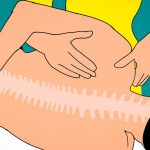When you are diagnosed with one or more autoimmune diseases, you may react with shock, dismay and even fear. Or you may look at the diagnosis as “finally, a reason for the fatigue, pain and swelling I’ve lived with.” Your attitude directly affects your future.
With autoimmune diseases, the immune system attacks its own body. The immune system either becomes over-active or shows little activity and decreases the body’s ability to fight off infections. With more than 100 known autoimmune diseases, diagnosis may prove frustrating and take time because they have so many similar symptoms.
Common Denominators Affect Most Autoimmune Diseases
A common denominator for the 5 conditions examined in this article is inflammation. The pain, swelling, redness and fever brought on by inflammation leaves the body vulnerable to attack by other diseases.
Most autoimmune diseases are chronic but many can be controlled with proper treatment. Symptoms may come and go and can flare at any time.
Autoimmune Diseases Can Be Fatal
According to one source, as many as 23.5 million Americans suffer from an autoimmune disease and most shorten life expectancy, because the disease destroys body tissue and may affect organ function. These conditions often attack blood vessels, joints, muscles, red blood cells, skin, and even the heart.
For whatever reason, the numbers of people dealing with autoimmune diseases continues to grow but fortunately, the Food & Drug Administration (FDA) approves new drugs every years to combat the symptoms that plague so many.
Rheumatoid Arthritis: the Most Common Autoimmune Disease

Considered the most common of the autoimmune conditions, rheumatoid arthritis (RA) usually attacks less often in the early stages. Often, the same joint on both sides of the body shows pain, redness and/or swelling. Women are 3 times more likely than men to have RA.
Symptoms
In the beginning, RA attacks the smaller joints of fingers or toes and moves on to larger joints. Without treatment, deformity in joints may occur. Fatigue and sleeplessness are frequent companions of RA patients.
RA fatigue takes over the body like a steamroller. The debilitating tiredness, often accompanied by muscle aches, feels somewhat like the onset of flu.
Triggers
Smoking, hormones, environmental toxins and dental issues trigger RA flares. Stress causes a flare up of symptoms. Either physical or emotional stress causes flares.
Treatments & Medications

Once the doctor completes blood tests, scans and X-rays and arrives at a diagnosis of rheumatoid arthritis, a course of treatment is begun. Doctor and patient should work together to find the best treatment and drugs to achieve remission from the symptoms.
D-MARD drugs (disease modifying anti-rheumatic drugs), like Methotrexate, Plaquenil, and Sulfasalazine work for many patients, while the newer, biologic drugs, like Enbrel, Humira, Remicade and many more provide relief and remission for others.
Exercise must rank high as part of the treatment because regular exercise does improve the symptoms.
Prognosis
With early diagnosis, proper treatment, exercise and a healthy lifestyle, RA patients can live productive, normal lives, but close attention must be paid to following a good treatment plan. Find a rheumatologist you respect and get along with and let him or her know if you develop any worsening symptoms or issues.
Because rheumatoid arthritis often attacks bones, joints and other organs, special attention must be paid to changes in the body. Rest when you need to and try to get enough sleep. This autoimmune disease that used to be a death sentence for patients has come a long way in recent years.
Psoriatic Arthritis
This inflammatory and chronic type of arthritis affects up to 30% of people with psoriasis. So if you have psoriasis itself, make yourself aware of the symptoms of psoriatic arthritis (PsA). With this condition, the immune system attacks normal cells in the body.
No one knows for sure why some get psoriatic arthritis and others don’t. However, the main consensus falls back on genetics or the environment as cause.
Symptoms
If your psoriatic arthritis begins in your big toe, your doctor may first test you for gout, since it is similar. Then he or she may test you for PsA. Pain in the joint may or may not accompany a rash on your toe. PsA pain usually involves just one side or toe of the body. There may also be changes in the nails or “sausage” digits and swelling.
PsA causes pain at the point in the joints where the tendons and ligaments attach to the bones. The back of the heel (achilles tendonitis) and bottom of the foot (plantar fascitis) often become pain points.
Triggers
Stress unleashes a chemical that causes inflammation in psoriatic arthritis patients. Skipping doses of medication could trigger a flare. Weight gain causes stress on the body and may trigger a flare.
A viral or bacterial skin infection may cause PsA to flare. The flare might result from a staph infection or even shingles. Bumps and bruises from hitting your elbow on a hard surface might bring on a flare. These triggers are a few of many that could bring on a PsA flare.
Treatments and Medications
There are several types of PsA and treatment will depend on which type you have. X-Rays, MRI’s and lab tests will all be used to diagnose psoriatic arthritis. Since no cure exists, treatment focuses on management of pain and inflammation.
Disease-modifying antirheumatic drugs, also known as D-MARD’S, help slow the progression of PsA and save the joints and tissue. If those don’t work, many choose to take biologic drugs, like Orencia or Enbrel, or even immunosuppressive drugs. PsA patients should work with their doctors to find the medication that works best.
Prognosis
Psoriatic arthritis is a serious condition but with the right treatment and healthy diet, symptoms can be controlled significantly. While PsA doesn’t usually affect longevity, it can increase the chances of other serious conditions, like heart disease, impacting a patient’s life.
Lupus
Lupus, a systemic autoimmune disease that occurs when the body’s immune system attacks itself and its organs, causes inflammation that affects many different organs. Those include the joints, skin, kidneys, brain, heart and lungs.
Symptoms
Because the symptoms often mimic other autoimmune diseases, lupus often proves difficult to diagnose. The most distinguishing symptom is a butterfly-like rash that forms on the face from cheek to cheek. But not every case of the disease shows the rash.
Most lupus patients experience mild symptoms with flares where the symptoms will get worse for awhile and then go away. The most common symptoms include fatigue, fever, joint pain, stiffness, the facial rash, skin breakouts that worsen with sun exposure, shortness of breath, chest pain, dry eyes, and headaches.
Triggers
Lupus may be triggered by infections or sunlight or even certain medications. Exposure to halogen or fluorescent lights can also trigger a flare of lupus in some people. Suddenly stopping lupus medications can cause problems.
Certain drugs may trigger lupus. Sulfa drugs, like Bactrim, Sulfasalazine and others, cause a sensitivity to sunlight and may trigger the onset of a flare. Even penicillin medications like Amoxycillin and some Tetracycline drugs cause problems.
An infection such as a cold or other viral illness is known to trigger lupus flares. Emotional and physical stress and exhaustion might cause the disease to rear its ugly head.
Treatments and Medications
For many lupus patients, simple arthritis medications, like Tylenol or Ibuprofen may provide enough relief. Steroid medications help decrease swelling and pain, but they do create side effects. An anti-malarial drug like hydroxychloroquine may improve some symptoms of lupus. Immunosuppressants like Methotrexate provide relief in some cases.

Biological drugs may be employed if other medications don’t work. They target specific areas of the immune system to lessen symptoms.
Prognosis
New research suggests that approaches that target cells and molecules believed to at least partly cause lupus show promise for many patients. With proper treatment, 80% to 90% of patients could live a normal lifespan. Follow your doctor’s instructions and live a healthy lifestyle. And watch for the onset of any other illnesses, infections or conditions and report those to your physician.
What You Should Know about This Disease
Lupus patients should know that persons of color are 2-3 times more likely to develop the disease. This includes Black Americans, Hispanics, Native Americans and Asians.
90% of people diagnosed with lupus are between the ages of 15 and 44.
Lupus increases the risk of cardiovascular disease.
Lupus has no cure but a normal life is possible with treatment and a healthy lifestyle.
Sjogren’s
Sjogren’s, a chronic disorder of the immune system, occurs when white blood cells infiltrate the saliva glands, tear glands and other exocrine tissue. It leads to a decrease in tear and saliva production. This autoimmune disease often occurs as a secondary condition with rheumatoid arthritis, lupus and other similar autoimmune diseases.
Primary Sjogren’s happens by itself and secondary Sjogren’s occurs with another autoimmune disease. Both can be serious conditions if not treated properly. Most cases are diagnosed after age 40, and 90% diagnosed are women. The condition affects less than 4% of the population in the U.S.
Symptoms

Most common is the inability to produce tears or saliva. Salivary glands are swollen, and a dry cough is often present. When I visited an eye physician with a red, gritty eye, no moisture in my eyes and a dry mouth, I did not expect a diagnosis of Sjogren’s. I listened, went home with eye drops, and went about my life.
Years later, I suspect the neuropathy and occasional pain in my arms and legs may be the result of ignoring my earlier symptoms and not taking the eye drops or artificial tears that were prescribed. I was fortunate that my condition did not worsen sooner.
Ignoring the symptoms of this disease could become a huge mistake. An inflammation of the salivary glands, not uncommon with Sjogren’s, could contribute to mouth dryness, difficulty swallowing, dental disease/decay, gum disease, and even infection of the parotid glands in the cheeks.
Heartburn, difficulty swallowing and gastroesophageal reflux disease also may accompany Sjogren’s. In some cases, joint pain, brain fog and severe fatigue cause problems.
Triggers
Certain foods may trigger a Sjogren’s flare. Try to avoid or decrease the amount of red meat, processed or fried foods, alcohol, sodas or glutens you consume. Dental cavities and infections and dry eyes trigger flares. And as with most autoimmune diseases, stress brings on Sjogren’s symptoms.
Treatments and Medications
Doctors direct treatment of Sjogren’s toward the particular area of the body under attack. One example would be eye drops to provide extra moisture to replace the missing tears. Restasis drops may reduce the inflammation in eyes. Sjogren’s patients may need treatment for conjunctivitis. Two years ago, my doctor treated me with special drops for another kind of eye infection.
Relieving symptoms and complications in particular areas of the body, such as eyes, mouth and vagina, is the goal.
Dietary changes may be needed, such as adding extra Vitamin D, if tests show you are insufficient in Vitamin D blood levels. Flaxseed is thought to reduce eye dryness. Drink plenty of fluids.
Other medications may help stimulate saliva glands. In some cases, hydroxychloroquine helps with fatigue and join pain that often go with Sjogren’s.
Prognosis
Sjogren’s patients should continue to use the eye drops or other medications prescribed by their doctor, along with eating a healthy diet that does not include foods likely to trigger a flare. Regular dental visits for cleaning and exams will help keep teeth and gums healthy. With those parameters, they can avoid more serious conditions and live a normal life. If Sjogren’s is secondary to another autoimmune disease, one must also keep that primary condition under control.
What You Should Know about This Disease
You should know that eye infections, dental infections, bronchitis, sinusitis and vaginitis may appear with Sjogren’s. Good overall health habits make Sjogren’s easier to control.
You should know that smoking and air travel contribute to symptoms.
Carrying a supply of sugar-free lozenges that use Xylitol as a sweetener may help the dry-mouth-syndrome that goes with Sjogren’s.
Ankylosing Spondylitis
Ankylosing Spondylitis (A/S) causes inflammation in parts of the spine. In severe cases, this inflammation may cause the bones of the spine to grow together – or fuse – leading to a spine that doesn’t want to bend.
This autoimmune disease affects people in different ways. Some have mild flares including back pain and stiffness that come and go. Others have severe, ongoing back pain and stiffness. Diagnosis may prove difficult, because joint damage doesn’t always show up right away in imaging tests.

Certain factors increase one’s risk of getting A/S, such as genetics, age and sex. Those with a family history of the disease are more likely to develop it. Even someone with a family history of other autoimmune diseases may develop A/S. (Thus is the case with one of my granddaughters.)
Most people show signs of ankylosing spondylitis before age 45, and men are more likely to have it than women.
Symptoms
Pain and stiffness in the spine lead the symptom list for A/S. But pain in the hips, ribs, shoulders, knees, ankles and feet may also occur. Vision changes and eye pain go with it. A loss of appetite and weight loss may be present. Abdominal pain, skin rashes and severe fatigue are common.
Triggers
Environmental factors, like pollution, may trigger A/S. Smoking worsens symptoms. Smokers were found to contribute to longer bouts of morning stiffness and joint pain.
Poor posture makes it worse and may bring on a flare. Keep your body properly aligned to prevent crippling of the spine and lessen pain.
Trying to do too much may worsen symptoms or cause a flare-up, and obesity worsens symptoms.
Treatments and Medications
Medication helps but exercise, physical therapy and a change in diet become crucial to improving your overall outlook. Drugs may begin with nonsteroidal anti-inflammatory medications and move on to stronger drugs like biologics if necessary.
Managing stress through massage, yoga or meditation helps, as does heat applied to tight muscles or cold to inflamed areas. Maintaining good posture should also be encouraged.
Prognosis
Some people may develop ankylosing spondylitis without much progression, while others continue to worsen. Experts continue to study the effects of A/S on the body. Progression tends to go slowly with this disease. Since immune activity triggers the inflammation, doctors may decide to use biologic drugs early on A/S patients. Patients who exercise regularly and follow their physicians’ treatment plan should do well and hopefully, limit progression.
What You Should Know about This Disease
You should develop a bedtime routine that helps you fall asleep. Take a hot bath or shower before bed and turn off all electronic devices. A good, supportive mattress contributes to good sleep. Avoid alcohol or sugar in the evenings.
You should know that stress contributes to pain and other symptoms of A/S. Find techniques to help relieve you of stress, like massages, meditation, prayer.
Enjoying life and having fun will help you relax and should lessen pain and stiffness in your body.
Life with an Autoimmune Disease
Living with an autoimmune disease presents challenges and at times, proves quite miserable. But new drugs and good information available via the internet allow us to get in charge of our health and control many of those symptoms that contribute to pain, stiffness and suffering.

While most of these autoimmune diseases may disrupt your life at times, few are fatal. Treatments abound for you to try. Find a good rheumatologist, follow his or her treatment plan, improve your diet and visit your dentist often. Improving your life with an autoimmune disease won’t be easy and is not a quick fix. But making the effort is important and worth it!
great article….very informative…